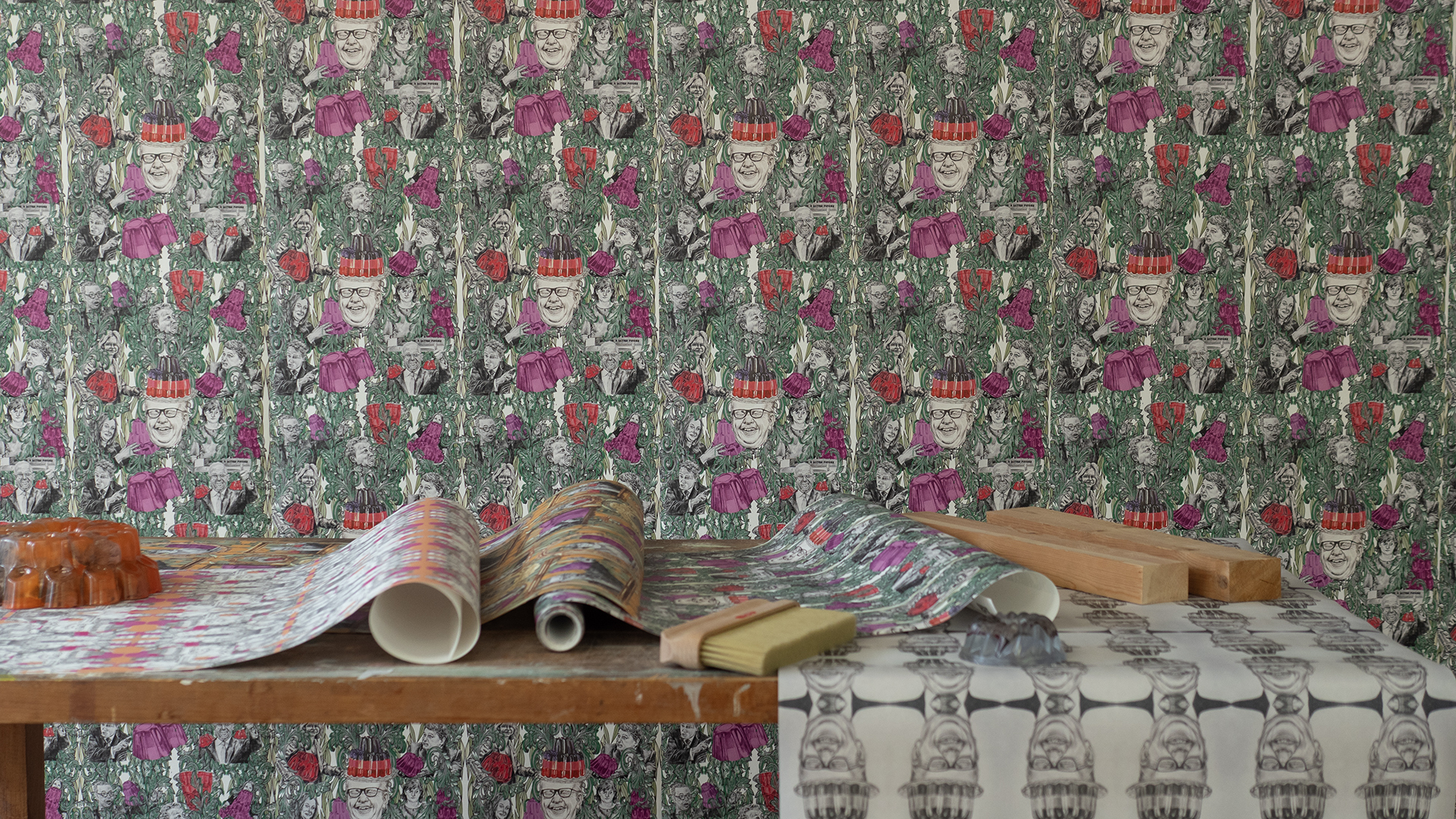This work explores the complex relationships between art education, socioeconomic class and government discourse on the functions of education.

Inspired by advancements in publicly funded art education and manufacturing of the 19th century I have created a series of wallpapers depicting our last ten education secretaries, hiding amongst the organic motifs of the Arts and Crafts movement. Wallpaper underwent a significant transformation in the 19th century, evolving from a luxury for the wealthy to a staple in working-class homes. The education secretaries appear alongside, or in some cases holding or hiding behind, jellies. Like wallpaper, the humble jelly thrived in the 19th century, leveraging new manufacturing methods for intricate moulds. Industrialists used it to impress guests and climb social ranks, but by the end of the Victorian period the introduction of manufactured gelatine saw this most elegant of constructions slithering down the social scale.
During the 19th Century access to the arts were expanded to the general public through the opening of Schools of Art and public art galleries. By contrast, The Government Art Collection was established, in 1898, as a private collection for the decoration of government offices. Now worth £3.5 billion, two thirds of the collection is on display in private government buildings, and the rest is in storage. As a source of ‘cultural capital’ (Bourdieu, 1993, 1984), this collection is retained rather than shared, with only the privileged few encountering elements of the collection every day.
The term ‘cultural capital’, was adopted by Ofsted (Office for Standards in Education) in 2019 to judge the quality of education given to learners in British state schools, with a particular emphasis on ‘raising aspirations’ of those less advantaged. As an art teacher embedded in the state school sector this feels like a ‘papering over the cracks’, or a quasi-promotion of cultural capital, when the exact reverse is happening due to the decline in arts provision within state education over the last 14 years.
This work dreams of putting the Government Art Collection to better use, by displaying it in public spaces, including schools, and proposing that government departments be redecorated with the Government Wallpaper Collection instead.
During the 19th Century access to the arts were expanded to the general public through the opening of Schools of Art and public art galleries. By contrast, The Government Art Collection was established, in 1898, as a private collection for the decoration of government offices. Now worth £3.5 billion, two thirds of the collection is on display in private government buildings, and the rest is in storage. As a source of ‘cultural capital’ (Bourdieu, 1993, 1984), this collection is retained rather than shared, with only the privileged few encountering elements of the collection every day.
The term ‘cultural capital’, was adopted by Ofsted (Office for Standards in Education) in 2019 to judge the quality of education given to learners in British state schools, with a particular emphasis on ‘raising aspirations’ of those less advantaged. As an art teacher embedded in the state school sector this feels like a ‘papering over the cracks’, or a quasi-promotion of cultural capital, when the exact reverse is happening due to the decline in arts provision within state education over the last 14 years.
This work dreams of putting the Government Art Collection to better use, by displaying it in public spaces, including schools, and proposing that government departments be redecorated with the Government Wallpaper Collection instead.